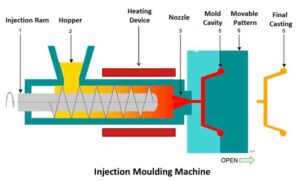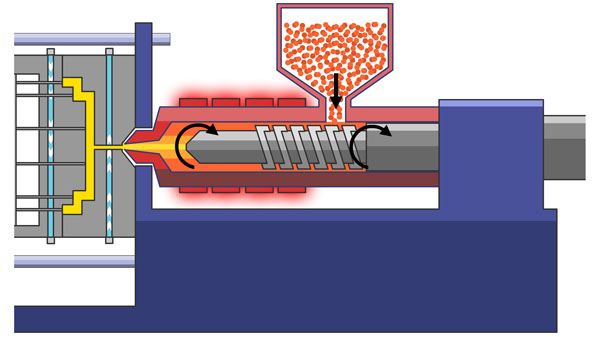Manufacturing Industries - An Overviews
Wiki Article
Not known Details About Plastic Manufacturing
Table of ContentsAdditive Manufacturing Things To Know Before You Get ThisManufacturing - TruthsWhat Does Additive Manufacturing Do?Getting My Plastic Manufacturing To WorkMore About Additive ManufacturingLean Production Can Be Fun For Anyone
The text on this page is a sample from our full White Paper 'Injection Moulding for Purchasers' - * Sample text * - for full overview click the download switch over! Introduction This guide is meant for people who are aiming to source plastic mouldings. It provides a much required understanding into all that is included with developing plastic parts, from the mould device called for to the moulding process itself.If you want to discover even more, the guide covers kinds of mould tools, in addition to special completing processes such as colours & plating. Words that are underlined can be located in the reference in the appendix ... Part I: Moulding: The Essentials The Benefits of Injection Moulding Plastic shot moulding is an extremely precise process that uses several benefits over other plastic handling methods.
Accuracy is perfect for really detailed components. You can hold this moulding in the hand of your hand and also it has bosses, ribs, metal inserts, side cores as well as openings, made with a sliding closed off feature in the mould tool.
All About Plastic Manufacturing


from material feed Product melting; material injectionProduct cooling time cooling down ejection as well as the re-closing of the mould tool ready device prepared next cycleFollowing Draft angles - The walls of a moulded component need to be somewhat tapered in the instructions in which the part is expelled from the mould device, to permit the component to be expelled easily.
Ejector stroke - The pressing out of ejector pins to eject the moulded part from the mould device. Ejector stroke rate, size as well as timing needs to be thoroughly controlled to avoid damage to the ejectors and mould device, yet at the exact same time make the moulding cycle as brief as possible.

Not known Details About Mfg
Ribs - When a plastic component has slim walls, ribs are contributed to the style to make the slim walls more powerful Side cores - Side action which generates a function on a moulded part, at an opposing angle to the typical opening direction of the mould device. mfg. The side core needs to be able to retract as the plastic component can not be ejected or else.
Wall surfaces - The sides of a moulded component The message on this web page is an example from our full White Paper 'Injection Moulding for Customers'.
Injection moulding is commonly made use of for making a variety of components, from the smallest components to entire body panels of automobiles. Shot moulding uses a special-purpose device that has three parts: the injection device, the mould as well as the clamp.
The Greatest Guide To Plastic Manufacturing
Refine features [edit] Injection moulding makes use of a ram or screw-type plunger to compel liquified plastic or rubber material into a mould cavity; this strengthens right into a shape that has complied with the contour of the mould. It is most frequently used to refine both polycarbonate and thermosetting polymers, with the volume use the previous being significantly higher.: 13 Thermoplastics prevail as a result of characteristics that make them very appropriate for injection visit the website moulding, such as convenience of recycling, versatility for a vast range of applications,: 89 and capability to soften and also flow on heating.In numerous tooth cavity moulds, each dental caries can be similar and also create the very same components or can be unique and also develop numerous various geometries during a solitary cycle.
When sufficient material has actually collected, the material is compelled at high pressure and rate into the component forming dental caries. The exact quantity of shrinkage is a feature of the resin being made use of, as well as can be fairly predictable. To stop spikes in pressure, the process normally makes use of a transfer position representing a 9598% complete cavity where the screw shifts from a continuous rate to a constant stress control.
What Does Mfg Do?
The packing pressure is applied till the gateway (dental caries entrance) strengthens. Due to its little dimension, the gate is generally the first area to strengthen with its whole thickness.: 16 Once the gate solidifies, no even more material can get in the tooth cavity; accordingly, the screw reciprocates as well as gets material for the next cycle while the material within the mould cools so that it can be expelled as well as be dimensionally stable.Report this wiki page